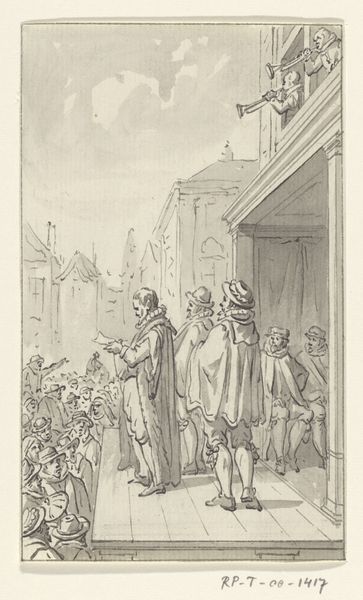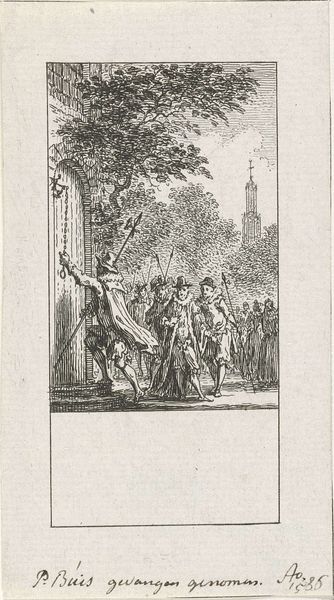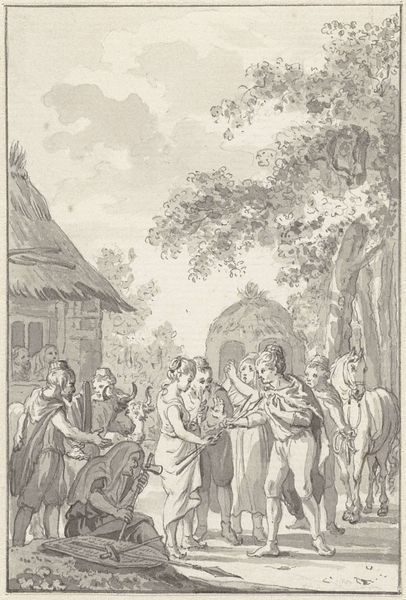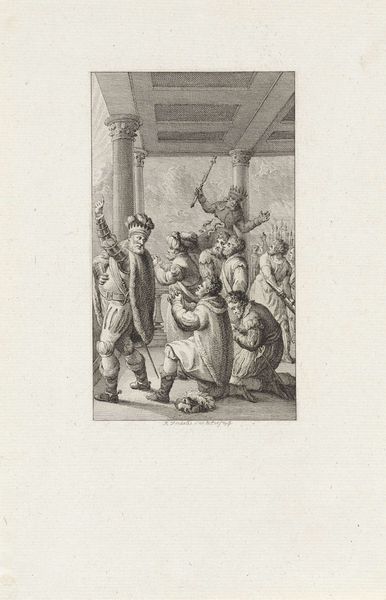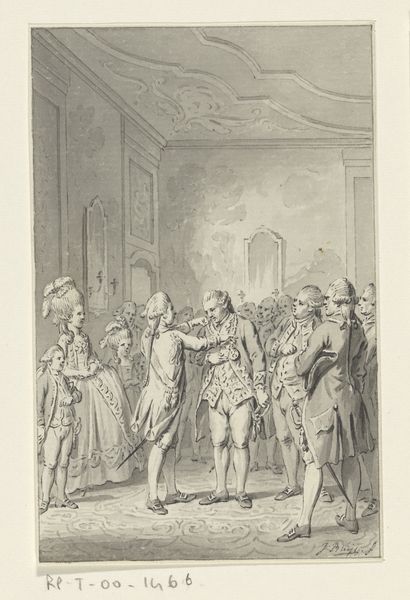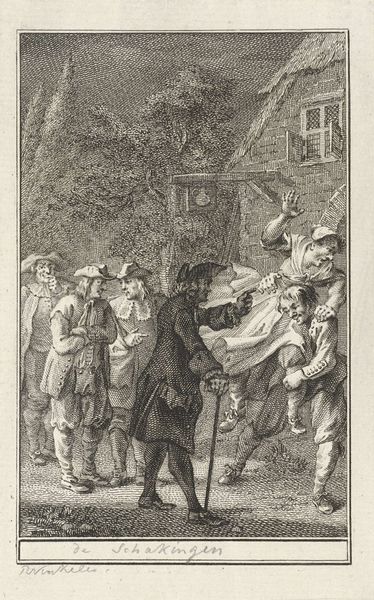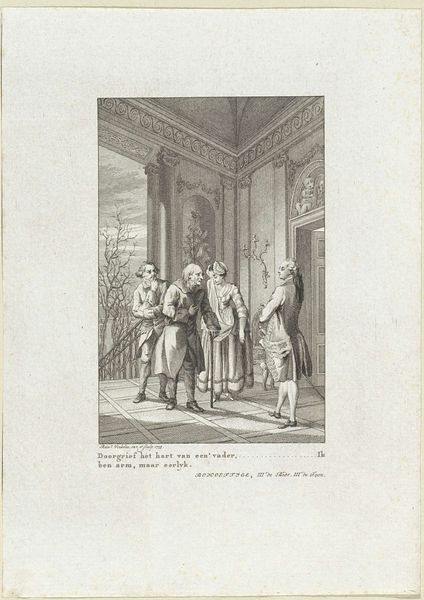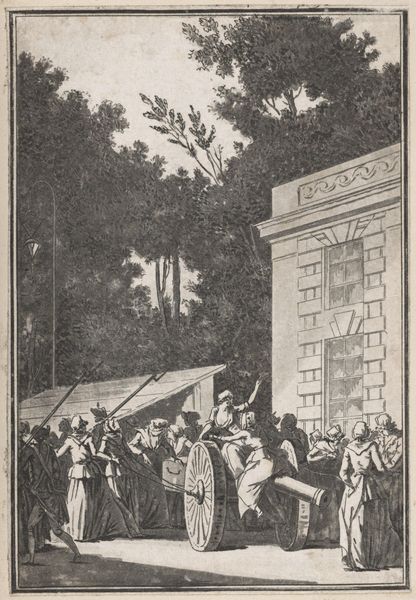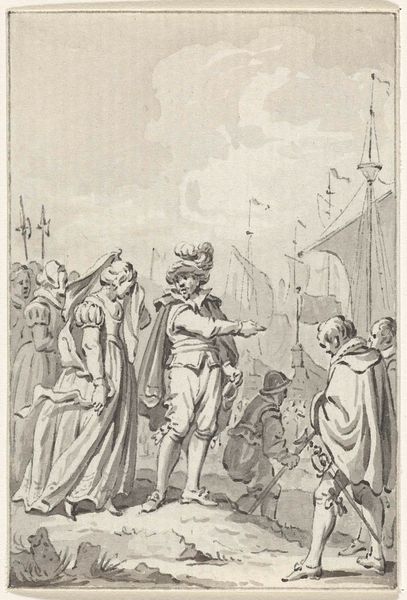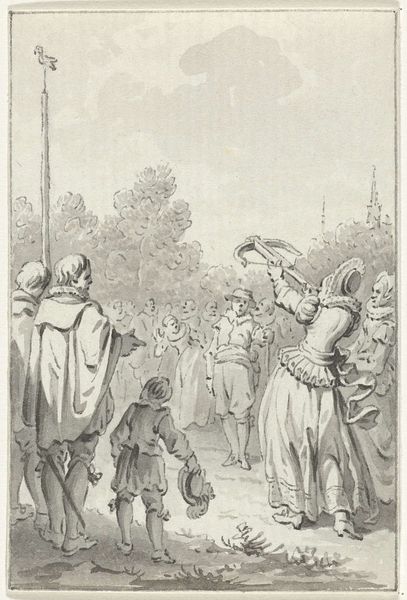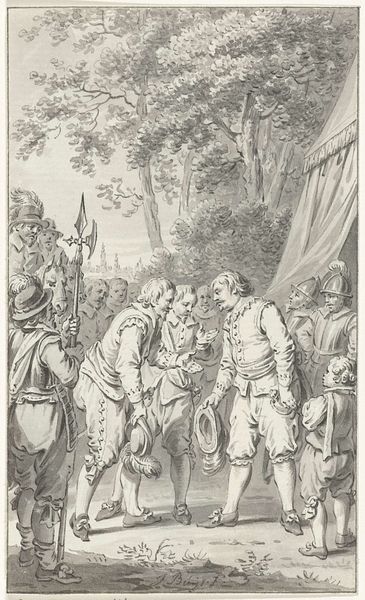
drawing, paper, ink
#
portrait
#
drawing
#
neoclacissism
#
narrative-art
#
pen illustration
#
landscape
#
figuration
#
paper
#
ink
#
pen-ink sketch
#
sketchbook drawing
#
genre-painting
#
history-painting
Dimensions: height 82 mm, width 56 mm
Copyright: Rijks Museum: Open Domain
Editor: So, here we have Jacobus Buys' "Utrechtenaren smeken graaf Willem IV om vrede, 1345", created between 1787 and 1795. It's an ink and pen drawing on paper, depicting a historical scene. I am really taken by the use of line to convey so much detail. What's your perspective on this piece? Curator: I'm immediately drawn to the materials and labor involved. Think about the paper: its production relies on a complex system of resource extraction, processing, and trade. The ink, too, derived from specific sources, painstakingly manufactured. And then there’s Buys, his hand, his labor translating a historical narrative through this medium. Editor: That's fascinating! It does make you think about all that went into it beyond just the artistic vision. What about the Neoclassical style? Does that fit into your materialist interpretation? Curator: Absolutely. Neoclassicism itself was a movement deeply concerned with order, rationality, and, significantly, the revival of classical materials and techniques. Notice how the bodies are rendered? We see the effect of academic training in representing human anatomy, suggesting specific workshops and modes of instruction, all feeding into a certain style and production of art in this period. What sort of consumption were these narrative scenes fueling, and why? Editor: It makes you realize the artwork is not an isolated object, but an outcome of specific material conditions and processes. I'd previously thought only of history and its subject. Curator: Exactly. And consider the "historical" moment itself – a 17th-century artist reinterpreting a 14th-century event for an 18th-century audience. History wasn’t being neutrally reproduced. Whose peace were they referencing and for what reasons during this historical period? Editor: That connection wasn't immediately apparent. Curator: By examining the materials, processes, and historical context, we expose the complex networks of production, consumption, and power relations embedded within the artwork itself. Editor: Thank you. Looking through that material lens has given me a richer understanding of how to see art. Curator: Agreed! It's these investigations into process that let us uncover the art history we often forget to write.
Comments
No comments
Be the first to comment and join the conversation on the ultimate creative platform.
